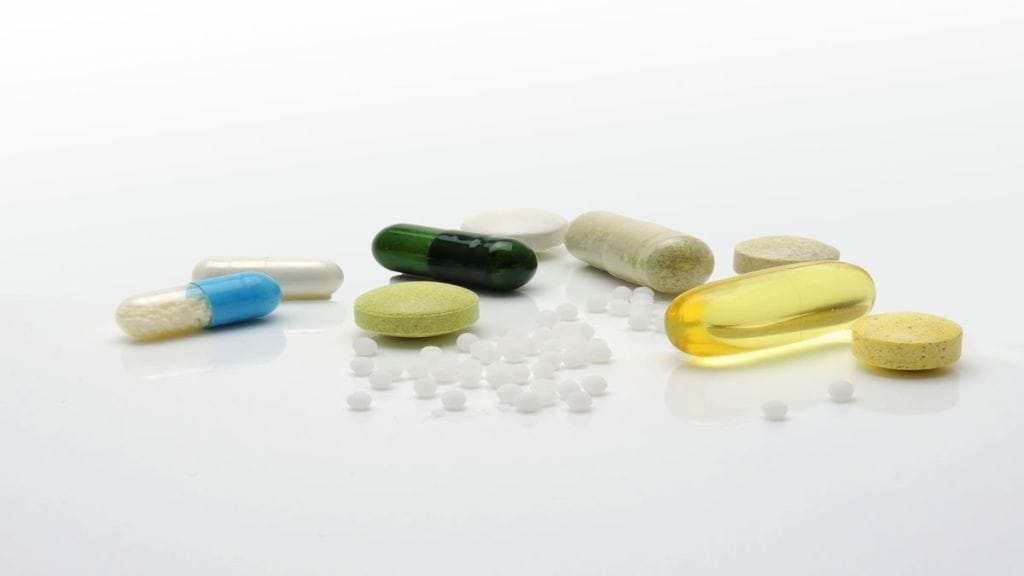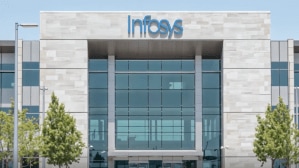An effective drug delivery is crucial for the drugs’ impact on various ailments that affect the human body. According to a 2023 study published by American Chemical Society, with the evolution of therapeutic landscape from small-molecule drugs to a new generation of therapeutics including proteins, peptides, monoclonal antibodies, nucleic acids, and even live cells, drug delivery technologies have also evolved to meet their unique delivery needs.
According to experts, there are two types of drug delivery systems–Traditional Drug Delivery System; and Novel Drug Delivery System. A 2020 study published in the ScienceDirect journal highlighted that as conventional formulations are associated with poor drug solubility, toxic side effects, lack of site selectivity, uncontrollable release profile, and low bioavailability, the novel drug delivery systems is gaining popularity in the industry.
The study also pointed out that NDDSs have gained much attention, especially in cancer therapy and immunodeficiency diseases due to their high efficacy and stability.
What is Novel Drug Delivery System?
Novel Drug Delivery System (NDDS) is a process of administering a pharmaceutical compound through new ways to maximise therapeutic benefits.
“NDDS are new ways of getting medicine into the body to make it more effective and safer. These systems help to deliver the right amount of drug for the right length of time in the right place in the body. This can mean keeping a drug at a steady, effective level in the body while reducing side effects and toxicity, or delivering a drug directly to a specific set of cells or organs, like in cancer treatments. NDDS can also work by controlling how a drug acts over time – this is called ‘sustained drug action’. This can mean how a drug is taken up by the body and distributed to different organs or tissues,” Saransh Chaudhary, President, Global Critical Care, Venus Remedies Ltd, and CEO, Venus Medicine Research Centre (VMRC), the company’s R&D wing, told Financial Express.com.
Chaudhary also revealed that in some cases, NDDS uses advanced techniques to control where and when a drug is released in the body. In other cases, NDDS can focus on the effect of a drug in a specific area by controlling where the drug is released, like a particular organ or tissue that’s diseased.
“It can also target a drug to a specific type of cell by using carriers or by modifying the drug’s chemical structure, a process called ‘chemical derivatisation’. This means changing a chemical compound into a similar product to deliver the drug to the right type of cell,” he added.
John Christopher Joseph, Practice Head, Pharma at GlobalData told Financial Express.com the principles of NDDS are based on interdisciplinary approaches combining polymer science, pharmaceutics, bioconjugate chemistry, and molecular biology.
“Pharmaceutical companies are currently utilizing and exploring various novel drug delivery systems such as nanoparticles (ex: lipid nanoparticles); exosomes; niosomes; microencapsulation; targeted drug delivery systems (ex: gene therapy vectors), 3D Printing, novel drug delivery devices (ex: digital inhalers) for their portfolio drugs,” Joseph said.
Lipid Nanoparticles are the promising novel cell-targeted drug delivery system for RNA therapeutics (ex: mRNA vaccines), and it is being explored for gene therapy, he said.
Hydrogels and vector-based gene therapies are emerging as promising drug delivery systems, he pointed out.
Understanding methods of drug delivery system
According to Chaudhary, NDDS come in many forms and are designed to deliver drugs in specific ways. They can be divided into categories like targeted, controlled and modulated drug delivery systems. They also can be classified by how they’re used, such as oral, skin, nasal, vaginal, or inhalation routes.
Here are some examples of NDDS:
Microparticulate Systems: These are tiny beads that hold the drug and control its release, making sure it’s delivered properly. They’re mainly used for oral delivery, but can also be used in other ways.
Nanoparticles: These are extremely small drug delivery systems that have wide-ranging uses, including the ability to target tumours. Some drugs are already being sold in nanoparticle form.
Osmotically Modulated Systems: This type uses tablets coated in a special material that controls the drug’s release rate. These have been used to deliver many successful drugs, such as Prazosin and Salbutamol.
Transdermal Therapeutic Systems (TTS): These systems deliver drugs through the skin. They come in different forms and can be used for various drugs, like nicotine or female hormones.
Aquasomes: These are nanoparticles that help protect and preserve delicate biological molecules. They can deliver drugs through injection, with more routes potentially available in the future.
Dendrimers: These tree-like structures can hold drugs for controlled or targeted delivery. They’re similar to other structures like liposomes and micelles. Starburst Dendrimers have remarkable properties for delivery of drugs, vaccines, metals or genes to the desired sites.
Multiple Emulsions: A promising use of multiple emulsions is drug targeting via antibody/ligand tagging to the carrier droplets. Also, because of their globular size, drugs may be targeted to lungs and reticuloendothelial systems (RES).
Microemulsions: These are stable systems that can improve the availability of drugs in the body. They’ve been used for a variety of drugs, such as anti-inflammatory and antifungal drugs. Proteins and peptides may also be formulated as oral microemulsions, such as oral insulin systems. Their scope in developing oral vaccines is also being explored. However, scalability forms a major challenge in their adoption.
Liposomes: These are small carriers that can hold a drug inside them. Liposomes are constructed of polar lipids which are characterised by having a lipophilic and hydrophilic group on the same molecules. Upon interaction with water, polar lipids self-assemble and form self-organised colloidal particles. They’re like artificial cells and have been used for cancer treatments (Doxorubicin, Daunorubicin) and antifungals (Amphotericin B).
Niosomes: Similar to liposomes, niosomes are less expensive and more stable. They’ve been used for treatments of cancer and some infectious diseases.
Self-Regulating Systems: These systems release drugs when needed by the body and at a rate determined by the body’s needs. These are intelligent self-regulatory or pulsatile drug delivery systems, which release drug in response to external stimuli like heat, light, ultrasound, magnetic fields, pH and/or chemicals. An example of this type of system is the insulin pump for diabetes management.
What are the benefits of NDDS?
Chaudhary reveals that NDDS are important because they provide a better way to deliver drugs, especially for chronic diseases like cancer and diabetes.
“They make medications more effective and reduce side effects by ensuring that the drug is delivered precisely where it’s needed, and they can release the drug over a longer period of time. This also means that patients need fewer doses, which can make the medication more affordable,” he added.
He also informed that for pharmaceutical companies, NDDS are beneficial because they can be a more cost-effective way to develop new treatments instead of creating a new drug from scratch, companies can reformulate existing drugs using NDDS, which saves time and money.
“This approach also tends to be more successful, reducing risk for the companies. Plus, one NDDS technology can be used to develop multiple drugs, allowing a company to secure a larger market share,” he added.
According to Joseph, many biologic drugs such as antibodies, vaccines, and cell and gene therapies may not be taken by using the conventional route of drug administration because they might be susceptible to enzymatic degradation, have poor bioavailability, and poor penetration of intestinal mucosa.
“The novel drug delivery systems can improve patient compliance, improve drug bioavailability, enable modified drug release, decrease the dosing frequency, achieve targeted drug delivery, reduce immunogenicity, and improve the drug safety, and therapeutic efficacy of drugs.These advancements have the potential to revolutionize the field of healthcare and improve patient outcomes,” he told Financial Express.com.
It also plays a crucial role in the development of personalized medicine by tailoring drug delivery systems to individual patient characteristics, such as genetic makeup, disease stage, or lifestyle factors, he added.
What is the scope and potential of NDDS in India?
According to Joseph, India is a global leader in active pharmaceutical ingredients manufacturing and a leading destination for contract drug development and manufacturing organizations.
“Adopting novel drug delivery systems by the Indian pharmaceutical companies for the existing drugs (repurposed drugs) may have huge potential to target the US pharmaceutical market by using 505(b)(2) applications. Similarly identifying the latest trend in NDDS and investing in the same may provide global business opportunities for Indian pharmaceutical companies,” Joseph told Financial Express.com.
As global pharmaceutical companies are focusing more on RNA therapeutics (ex: mRNA vaccines) and increasing their pipeline drugs, it is a great opportunity for Indian pharmaceutical companies to adopt mRNA manufacturing capabilities and reach globally, he pointed out.
India also has the best patient access and affordability, which can play a potential role in the development of novel drug delivery systems for the unmet medical need of chronic diseases, he added.
Chaudhary told Financial Express.com that several Indian pharmaceutical companies are now developing innovative NDDS solutions to compete with big pharma in regulated markets.
“This is being supported by ground-breaking research from top institutes and dedicated contract research organisations. NDDS also has immense potential in India in response to the rising burden of chronic diseases in the country, which has brought together pharma researchers and scientists to work on these novel solutions. We expect that with more and more research efforts focused in this area, many conventional dosage forms will be replaced by NDDS in the near future,” he told Financial Express.com.
Chaudhary told Financial Express.com that Venus Remedies Ltd is using the power of NDDS to enhance the efficacy of herbal medicines.
“Using NDDS, the Natural Products Research Laboratory (NPRL) of the Venus Medicine Research Centre has devised transdermal patches, embedded with nanoparticle-sized essential oils. These patches, acting as mediators, introduce medication directly through the skin, offering a safer and more efficient route than oral administration. This strategy evades the digestive system, thereby mitigating potential harm to organs like the liver and kidneys and circumventing some side effects related to oral drug intake,” he added.
Meanwhile, Joseph told Financial Express.com that the application of novel drug delivery systems can be extended to the reformulation of Indian traditional medicines such as ayurvedic, herbal preparations, cosmeceuticals, and nutraceutical products.
“This may provide new domestic business opportunities for Indian pharmaceutical companies,” he added.








